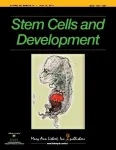(Press-News.org) A new wearable brain-machine interface (BMI) system could improve the quality of life for people with motor dysfunction or paralysis, even those struggling with locked-in syndrome - when a person is fully conscious but unable to move or communicate.
A multi-institutional, international team of researchers led by the lab of Woon-Hong Yeo at the Georgia Institute of Technology combined wireless soft scalp electronics and virtual reality in a BMI system that allows the user to imagine an action and wirelessly control a wheelchair or robotic arm.
The team, which included researchers from the University of Kent (United Kingdom) and Yonsei University (Republic of Korea), describes the new motor imagery-based BMI system this month in the journal Advanced Science.
"The major advantage of this system to the user, compared to what currently exists, is that it is soft and comfortable to wear, and doesn't have any wires," said Yeo, associate professor on the George W. Woodruff School of Mechanical Engineering.
BMI systems are a rehabilitation technology that analyzes a person's brain signals and translates that neural activity into commands, turning intentions into actions. The most common non-invasive method for acquiring those signals is ElectroEncephaloGraphy, EEG, which typically requires a cumbersome electrode skull cap and a tangled web of wires.
These devices generally rely heavily on gels and pastes to help maintain skin contact, require extensive set-up times, are generally inconvenient and uncomfortable to use. The devices also often suffer from poor signal acquisition due to material degradation or motion artifacts - the ancillary "noise" which may be caused by something like teeth grinding or eye blinking. This noise shows up in brain-data and must be filtered out.
The portable EEG system Yeo designed, integrating imperceptible microneedle electrodes with soft wireless circuits, offers improved signal acquisition. Accurately measuring those brain signals is critical to determining what actions a user wants to perform, so the team integrated a powerful machine learning algorithm and virtual reality component to address that challenge.
The new system was tested with four human subjects, but hasn't been studied with disabled individuals yet.
"This is just a first demonstration, but we're thrilled with what we have seen," noted Yeo, Director of Georgia Tech's Center for Human-Centric Interfaces and Engineering under the Institute for Electronics and Nanotechnology, and a member of the Petit Institute for Bioengineering and Bioscience.
New Paradigm
Yeo's team originally introduced soft, wearable EEG brain-machine interface in a 2019 study published in the Nature Machine Intelligence. The lead author of that work, Musa Mahmood, was also the lead author of the team's new research paper.
"This new brain-machine interface uses an entirely different paradigm, involving imagined motor actions, such as grasping with either hand, which frees the subject from having to look at too much stimuli," said Mahmood, a Ph. D. student in Yeo's lab.
In the 2021 study, users demonstrated accurate control of virtual reality exercises using their thoughts - their motor imagery. The visual cues enhance the process for both the user and the researchers gathering information.
"The virtual prompts have proven to be very helpful," Yeo said. "They speed up and improve user engagement and accuracy. And we were able to record continuous, high-quality motor imagery activity."
According to Mahmood, future work on the system will focus on optimizing electrode placement and more advanced integration of stimulus-based EEG, using what they've learned from the last two studies.
INFORMATION:
This research was supported by the National Institutes of Health (NIH R21AG064309), the Center Grant (Human-Centric Interfaces and Engineering) at Georgia Tech, the National Research Foundation of Korea (NRF-2018M3A7B4071109 and NRF-2019R1A2C2086085) and Yonsei-KIST Convergence Research Program. Georgia Tech has a pending patent application related to the work described in this paper.
Citation: Musa Mahmood, et al., "Wireless Soft Scalp Electronics and Virtual Reality System for Motor Imagery-based Brain-Machine Interfaces." (Advanced Science, July 2021)
The Georgia Institute of Technology, or Georgia Tech, is a top 10 public research university developing leaders who advance technology and improve the human condition.
The Institute offers business, computing, design, engineering, liberal arts, and sciences degrees. Its nearly 40,000 students representing 50 states and 149 countries, study at the main campus in Atlanta, at campuses in France and China, and through distance and online learning.
As a leading technological university, Georgia Tech is an engine of economic development for Georgia, the Southeast, and the nation, conducting more than $1 billion in research annually for government, industry, and society.
During the height of the pandemic, some hospitals were overwhelmed with patients seeking treatment for COVID-19. This situation could happen again during future outbreaks, especially with SARS-CoV-2 variants of concern on the rise. Now, researchers reporting in ACS' Analytical Chemistry have developed a blood test to predict which people infected with COVID-19 are most likely to experience serious symptoms, which could help health care workers prioritize patients for hospitalization and intensive care.
Although many people who contract COVID-19 have either no symptoms or mild ones, some require intensive care for pneumonia with acute respiratory distress syndrome. Risk factors for severe disease include older age, ...
Since antiretroviral therapy (ART) for HIV was introduced in 1996, AIDS-related morbidity and mortality has declined significantly. People living with HIV are now expected to live nearly as long as people without HIV. Despite these advances, those living with HIV often report poor well-being and health-related quality of life.
To guide stakeholders in improving health system responses to achieve the best possible long-term health outcomes for people living with HIV, a global multidisciplinary group of HIV experts led by CUNY SPH Senior Scholar Jeffrey Lazarus and including Distinguished Professor Denis Nash and Associate Professor Diana Romero developed a consensus statement identifying the key issues health systems must address in order to move beyond the longtime ...
Activism and the Clinical Ethicist
Christopher Meyers
Although clinical ethics scholarship and practice have largely avoided assuming an activist stance, the many health care crises of the last 18 months motivated a distinct change: activist language has permeated conversations over such issues as the impact of triage policies on persons with disabilities and of color, and how the health care system has historically failed African Americans. "This activism is, to my mind, an overdue and welcome turn, and my goal here is to defend it--generally and with particular ...
ALBUQUERQUE, N.M. -- Researchers at Sandia National Laboratories have designed a new class of molten sodium batteries for grid-scale energy storage. The new battery design was shared in a paper published today in the scientific journal Cell Reports Physical Science.
Molten sodium batteries have been used for many years to store energy from renewable sources, such as solar panels and wind turbines. However, commercially available molten sodium batteries, called sodium-sulfur batteries, typically operate at 520-660 degrees Fahrenheit. Sandia's new molten sodium-iodide battery operates at a much cooler 230 degrees Fahrenheit instead.
"We've been working to bring the operating temperature of molten sodium batteries down as low as physically possible," ...
Scientists have developed a new way to model and map the health of coral reef ecosystems using data collected on the Khaled bin Sultan Living Oceans Foundation's Global Reef Expedition. This innovative method, presented today at the International Coral Reef Symposium (ICRS), can determine which natural and anthropogenic factors are most likely to lead to persistently vibrant coral and fish communities. Their findings can help scientists identify the reefs most likely to survive in a changing world.
The new models are a first step in being able to produce maps of global coral reef resilience.
To create these models, scientist Anna Bakker needed a lot of data on coral reefs from ...
Drugs must be safe not just for the patients; in the case of pregnant patients, drugs must also be safe for the unborn children still in the womb. Therefore, at an early stage in the development of new medicines, candidate substances are tested in the Petri dish on embryonic stem cells from mouse cell lines. This is to avoid that an embryo-damaging effect would only be noticed at a later stage during tests with pregnant mice.
However, these cell culture tests are a highly simplified version of what takes place in the uterus. Researchers just add the test material to a culture of embryonic stem cells in a Petri dish, and can identify substances that have a direct adverse effect on embryonic cells. By contrast, in the body of a pregnant woman, active pharmaceutical ...
New Rochelle, NY, July 21, 2021-- Evaluating the efficacy of novel therapies requires the ability to monitor wound progression accurately and reproducibly over time. Researchers have proposed a new scoring system for wound healing in mice based on parameters in each phase of healing, as described in an article in the peer-reviewed journal Stem Cells and Development. Click here to read the article for free through August 21, 2021.
The parameters include re-epithelization, epithelial thickness index, keratinization, granulation tissue thickness, remodeling, and the scar elevation index. The parameters can be assessed using either Hematoxylin & Eosin or ...
By José Tadeu Arantes | Agência FAPESP – Gluten is a protein complex found in cereals such as wheat, rye and barley. It is responsible for the elastic texture of dough so that loaves and rolls can be baked into different shapes while remaining flexible and crusty. It also lengthens the shelf life of bread at room temperature, when associated with preservatives.
Gluten intolerance, however, has become a global epidemic, and gluten-free products are increasingly popular. The problem is that most of those available on the market are far from corresponding to consumers’ expectations in terms of appearance, aroma, flavor and durability. A research line focusing on ways to enhance gluten-free products is being pursued ...
No one wants bad breath -- not when visiting friends and family, at a job interview, and especially not on a first date. Smelly breath can make things awkward, but it also is a natural warning sign, indicating that serious dental issues are occurring. Now, researchers reporting in ACS Nano have constructed a portable, thumb-sized device that diagnoses bad breath by quickly "sniffing" exhalations for the gas that makes it stinky -- hydrogen sulfide.
Because most people can't smell their own breath, they need to ask someone else, which can be embarrassing and awkward. Some devices measure small amounts of stinky hydrogen sulfide, but they require exhaled air to be collected and tested on expensive instruments in a lab, which is not feasible ...
Safe and effective vaccines offer hope for an end to the COVID-19 pandemic. However, the possible emergence of vaccine-resistant SARS-CoV-2 variants, as well as novel coronaviruses, make finding treatments that work against all coronaviruses as important as ever. Now, researchers reporting in ACS' Journal of Proteome Research have analyzed viral proteins across 27 coronavirus species and thousands of samples from COVID-19 patients, identifying highly conserved sequences that could make the best drug targets.
Drugs often bind inside "pockets" on proteins that hold the drug snugly, causing it to interfere with the protein's function. Scientists can identify potential drug-binding pockets from the 3D structures of viral proteins. ...





